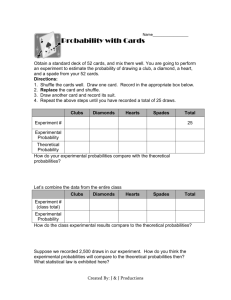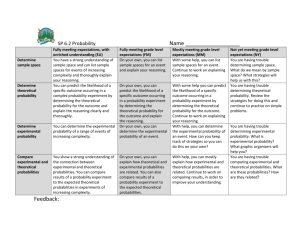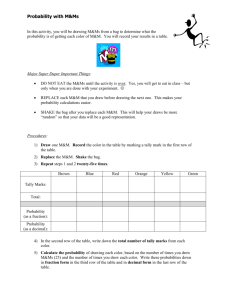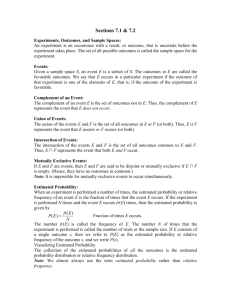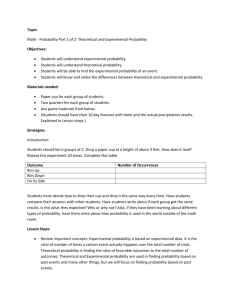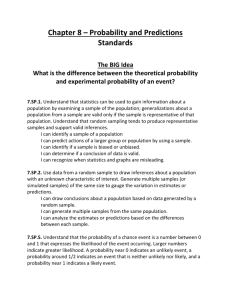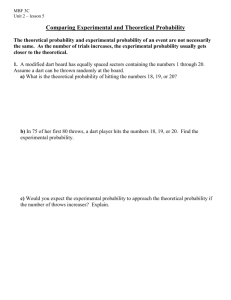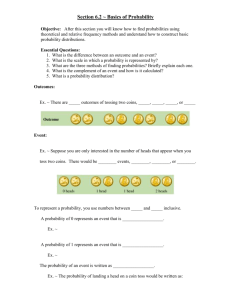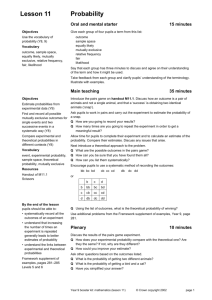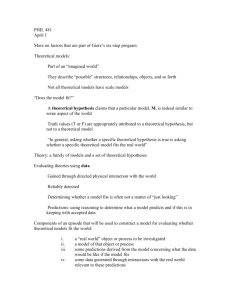Grade 7 Unit Project #2- Probability
advertisement
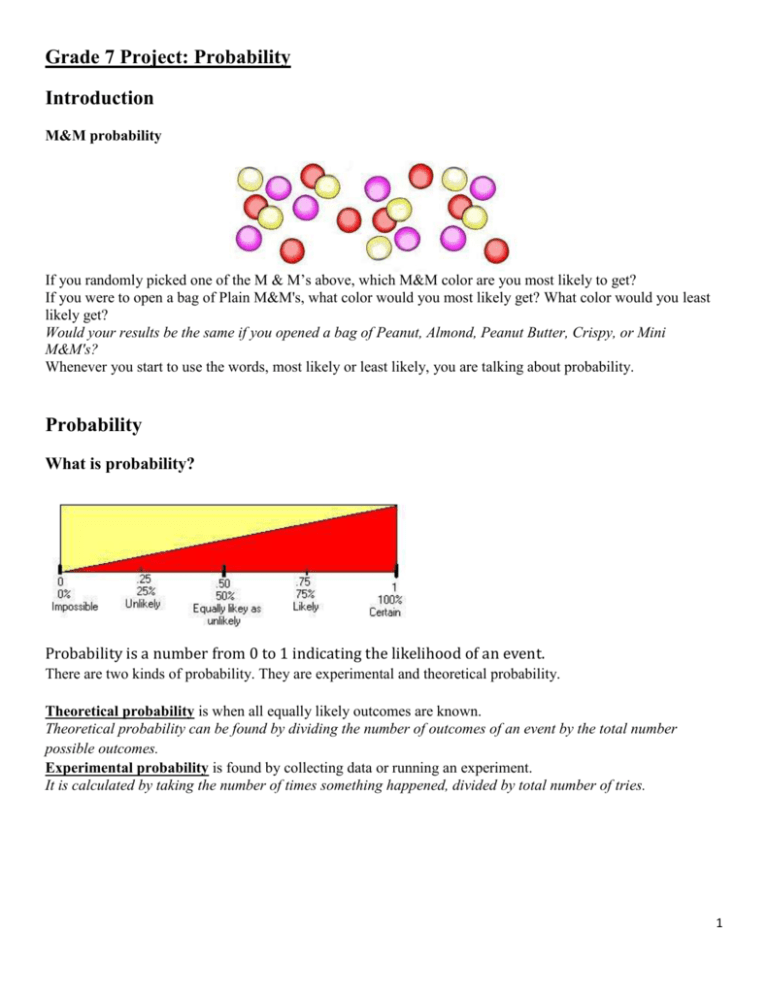
Grade 7 Project: Probability Introduction M&M probability If you randomly picked one of the M & M’s above, which M&M color are you most likely to get? If you were to open a bag of Plain M&M's, what color would you most likely get? What color would you least likely get? Would your results be the same if you opened a bag of Peanut, Almond, Peanut Butter, Crispy, or Mini M&M's? Whenever you start to use the words, most likely or least likely, you are talking about probability. Probability What is probability? Probability is a number from 0 to 1 indicating the likelihood of an event. There are two kinds of probability. They are experimental and theoretical probability. Theoretical probability is when all equally likely outcomes are known. Theoretical probability can be found by dividing the number of outcomes of an event by the total number possible outcomes. Experimental probability is found by collecting data or running an experiment. It is calculated by taking the number of times something happened, divided by total number of tries. 1 Experimental probability Conducting the Experiment Because we are not able to count all the different colors of M&M's that were created or will be created, we are not able to calculate the theoretical probability. So instead, we will find the experimental probability. Take one bag of M&M's. Count the total number in the bag. Separate the M&M's into each color. You should have a red, yellow, orange, green, blue, and brown pile. (If you are using M&M mini's you color piles will be different.) Count how many M&M's are in each pile. Remember to organize your data in a table. Which color has the largest quantity? Which color has the smallest quantity? Is this what you expected to find? Why or why not? Calculations Calculating probability. Calculate the probability of picking a certain color of M&M for each color category. The probability is found by creating a ratio. The number of M&M's in a color is placed in the numerator; the total number of M&M's is placed in the denominator. Example: If there are 6 red M&M's and 54 total M&M's. The probability of picking a red M&M is 6/54. Convert your fractions into decimals and percentages. Add these values to your table. Remember the more likely something is, the closer to 1 the probability will be. What color is most likely? Which one is least likely? Are there any that are equally likely? (This means the probabilities are the same.) 2 Theoretical probability M&M's probabililty. Before we said that we could not calculate the theoretical probability for the colors of M&M's because we do not know all the possibilities. However, because The Mars Candy Company creates the M&M's, they can regulate the amounts of each color of M&M's that are created. They have posted the theoretical probabilities on their website, www.mms.com . Look at their site and find the theoretical probabilities for the type of M&M's you used. Record the theoretical probabilities on your table. Sample Table. This is only a sample table. Yours will look differently. Remember to record all the data you collect. Round decimals to the nearest hundredths place. Probability Probability Probability Colors Total in fraction form in decimal form in percentage form Red 6 6/54 .11 11% Orange . . . . Yellow . . . . Green . . . . Blue . . . . Brown . . . . Total 54 Theoretical probability 20% . . . . . Predictions You can use this table to make the following predictions: How many of each color would be likely to be found in a bag of a) 50 M&M’s b) 100 M&M’s c) 250 M&M’s d) 500 M&M’s e) 1000 M&M’s Show all your working for these calculations. Combine all the data from your entire class. Are your predictions close? 3 Reflection Write a one page paper describing the process you went though, your findings, and reflections on those findings. Questions. Answer the following questions: Compare the theoretical probabilities to the experimental probabilities. Describe any similarities and differences. Justify why you think there are differences and/or similarities. Which do you think is more accurate, theoretical or experimental probability? Why? What could you do to make either of these probabilities more accurate? How would you do this experiment differently? Above and Beyond Create a bar and circle graph of your experimental probability. Repeat the experiment using more packages of M&M's and describe what happens. Repeat the experiment using a different kind of M&M's. Compare and contrast the probabilities of the different kinds of M&M's. Remember whatever you decide to do, you need to create a table and then conclude you data by summarizing what you did and reflecting on your results. Standards 6.S.2 Record data in a frequency table 6.S.4 Determine and justify the most appropriate graph to display a given set of data (pictograph, bar graph, line graph, histogram, or circle graph) 6.S.8 Justify predictions made from data 6.S.9 List possible outcomes for compound events 7.S.2 Display data in a circle graph 7.S.3 Convert raw data into double bar graphs and double line graphs 7.S.6 Read and interpret data represented graphically (pictograph, bar graph, histogram, line graph, double line/bar graphs, or circle graph.) 7.S.8 Interpret data to provide the basis for predictions and to establish experimental probabilities 7.S.10 Predict the outcome of experiment 7.S.11 Predict the outcome of experiment 7.S.12 Compare actual results to predicted results Skills Develop an understanding of probability Determine experimental and theoretical probability Represent and determine probability as a fraction of a set of equally likely outcomes Make predictions based on experimental probabilities Predict the results of a series of trials once the probability for one trial is known. Present data in a circle graph and interpret circle graphs 4
